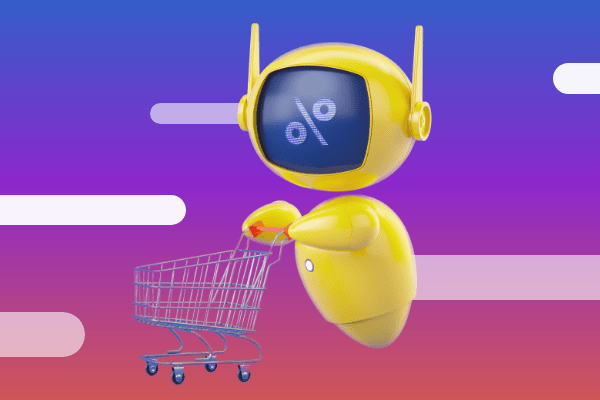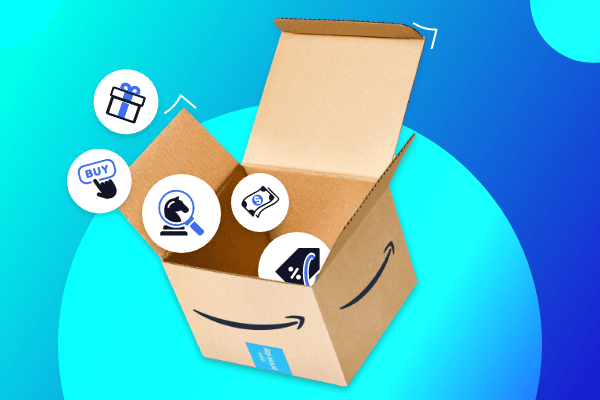Summary
As Google doubles down on AI-driven experiences and platforms like TikTok and ChatGPT become go-to starting points, retail marketers can no longer treat search as a keyword game. In this new discovery landscape, visibility depends on strong product data, content that earns its place, and a readiness to show up where intent begins. Skai’s Mark Sherman breaks down what’s changing—and what search marketers need to do next.
After watching last week’s Google I/O 2025 keynote, it was clear that something fundamental had shifted. Google is signaling a new era—where shopping campaigns become more visual and dynamic, YouTube becomes shoppable, and AI Mode redefines how discovery works. Keywords aren’t going away, but they’re no longer the center of the strategy. This moment got us thinking: the search landscape is being re-architected in real time—and it’s not just a Google shift. It’s a catalyst for retail marketers to rethink how discovery is being shaped across every touchpoint.
The New Search Moment: How Retail Marketers Need To Rethink Discovery
Search doesn’t just start on Google anymore—and even Google is signaling that the old rules don’t apply.
For more and more shoppers, it starts with a swipe on TikTok, a scroll through Instagram, or a typed question in ChatGPT. And when it comes to product discovery, those moments are starting to matter more than the browser. Generative AI tools like ChatGPT aren’t just experiments—they’re quickly becoming trusted commerce companions, helping users make shopping decisions earlier in the journey. Traditional search engines aren’t dead—they’re just no longer the default starting point for many shopping journeys.
That shift has big implications for retail marketers.
We’ve been trained to work in structured, measurable environments—campaigns defined by keywords, CPCs, feed quality, and ROAS. But today, those levers don’t tell the whole story. Consumers aren’t waiting to search. They’re discovering products earlier, in ways that don’t always include a click—or even an ad. Which means visibility can’t just be something you buy. It has to be something you build across a wider surface area.
Paid and organic search can no longer be defined solely by Google and Bing because the consumer journey now begins wherever attention lives—on TikTok, Amazon, ChatGPT, Instagram, emerging AI interfaces, and even voice assistants like Alexa and Siri. These platforms are not just discovery channels. They’re intent engines, surfacing product answers before users ever open a browser.
And they’re changing the rules faster than most teams can keep up.
Discovery is moving upstream
AI tools like ChatGPT now field over 517 million visits per month in the U.S. alone—surpassing Bing’s 376.6 million in December 2024. What used to be a job for search engines—comparison, validation, even recommendation—is now something consumers do with a single prompt. And these results aren’t just scraped from blogs. They’re curated using real-time retailer data, then refined by human editors to improve trust and ensure relevance.
In April 2025, ChatGPT received over 1 billion search visits—outpacing Bing and cementing its role in the discovery landscape.
At the same time, social platforms have become powerful intent indicators. 49% of Gen Z now starts their product discovery on TikTok or Instagram. This is no longer just a behavior trend—it’s a generational baseline. And while it’s easy to dismiss social-first discovery as top-funnel noise, the reality is that people are buying what they see, without ever entering a traditional search query.
Retail media’s role is shifting too. Amazon’s advertising revenue hit $56.2 billion in 2024, which now rivals or surpasses some of the original digital giants. This isn’t just about scale—it’s about trust. When shoppers are ready to act, they go to places that blend content and commerce seamlessly. Retailers have become search engines in their own right.
None of these changes are hypothetical. They’re already happening. And they’re changing where and how products get found.
Discovery has outgrown the keyword
Google I/O 2025 made one thing clear: the traditional keyword-first model of search marketing is being phased out. In its place, Google is introducing an AI-first architecture that touches nearly every part of the funnel. Shopping campaigns are getting creative upgrades, with video assets now supported in Google Merchant Center. YouTube is becoming a fully shoppable platform, blending upper-funnel engagement with lower-funnel action. And Google’s new AI Mode is reshaping what it means to “search”—from discreet queries to fluid, conversational interactions.
What this means for marketers is a complete redefinition of how intent is captured. Performance Max campaigns don’t use keywords at all, and broad match is encouraged as the default. Instead of building campaigns around exact terms, marketers will be leaning more on contextual signals, inferred intent, and AI-curated journey stages. Messaging and landing pages will be dynamically tailored by Google based on real-time behavioral insights.
Another noteworthy announcement was Google’s introduction of AI Max for search campaigns, which is a clear signal of where things are headed. While it’s still early, the goal is to combine the automation of Performance Max with more search-specific control, giving marketers a way to reach high-intent audiences without relying on traditional keyword strategies. As this evolves, it could become the bridge between what search marketers want (transparency and control) and where Google is clearly pushing the ecosystem (intent-first, creative-led, AI-optimized).
It’s also worth noting that these shifts aren’t just about formats—they’re about outcomes. Google is repositioning its ecosystem to deliver results across the entire journey, not just the moment of conversion. By blending YouTube, search, and Shopping into a more cohesive engine, they’re aiming to break down channel silos and create a programmatic, responsive system that serves the right message at the right time, on the right surface.
For search marketers, this is a moment of reckoning. Keyword management won’t disappear overnight, but its role is shifting. Campaign structure will become less about granular controls and more about preparing high-quality assets and signals that AI can use to assemble effective experiences. The winners in this next chapter won’t be the ones who master match types—they’ll be the ones who feed the algorithm with the best possible inputs and let AI do the orchestration.
What needs to change
This new landscape demands new thinking. We can’t just optimize for paid placements anymore. We need to rethink what visibility actually means—and how it gets earned across different discovery surfaces.
Get the product data right
It sounds basic, but it’s critical. Product content is the input for every discovery experience—whether it’s a search engine, a social carousel, or a generative response in an AI assistant. If your metadata is messy or incomplete, you’re invisible. That includes images, descriptions, attributes, and feeds—every field matters when the platform doesn’t give you a second chance.
Think beyond the ad unit
Most of these discovery channels aren’t pay-to-play. At least not yet. So content quality becomes the currency. Can your product surface organically in a list of recommended items? Can it be recognized and ranked by an AI interface? This isn’t about media dollars—it’s about informational value.
Treat measurement as a work in progress
It’s tempting to try to reconcile everything to last-click or a clean attribution model. But that’s not how people shop anymore. The better approach is to triangulate what’s working, even if it’s messy. Combine behavioral signals, test organic presence, look at influence across platforms—even when it doesn’t show up in the primary dashboard.
Get comfortable with less control
These new surfaces aren’t built for traditional control levers. You won’t always get keywords or placements to optimize against—just signals, prompts, and outcomes.
A lot of these platforms aren’t built for marketers. You don’t get to pick the placement or pay to move up the list. That’s frustrating. But it’s also freeing. It pushes us to invest in better content, clearer value props, and more relevant product data—the kind of stuff that scales across touchpoints.
Marketers are no longer simply bidding on keywords. We’re competing across a broader ecosystem—one that includes AI-generated answers, influencer-led discovery, retailer-native search, and voice-driven shopping moments. The job isn’t just about conversion. It’s about being credible, useful, and findable in more places than ever.
What we’re building toward
At Skai, we’re thinking about what this means holistically—not just as a search problem, but as a broader commerce challenge. The work we’re doing to unify data across retail media, paid search, and social platforms is already helping brands get closer to this new reality. It’s not about chasing every trend. It’s about staying rooted in how real discovery is actually happening—and making sure brands show up early, often, and well. That also means tailoring discovery strategies by audience—what works for Gen Z on TikTok may not apply to Gen X shoppers on Google or YouTube.
Search isn’t a single input anymore. It’s a constellation of prompts, platforms, and content surfaces. Our role is to meet consumers in those moments—before the ad, before the keyword, before the purchase. That’s why we’re developing an AI Discovery Toolkit to help brands benchmark where they stand and strengthen product visibility across every emerging surface.
As Google, Meta, and others embrace AI-first discovery, we’re actively exploring how tools like Celeste and our broader platform can help brands stay ahead—before AI search fully rewrites the playbook.
And if we can do that right, we don’t just follow the shift. We lead it.
Frequently Asked Questions
AI is moving from a backend optimization tool to the core engine of discovery. Google’s new AI Mode and AI Max for search campaigns shift the focus from keyword-based targeting to intent, context, and predicted outcomes—changing how marketers structure campaigns and how consumers find products.
While not disappearing, keywords are no longer the strategic foundation of search. Google Ads tools like Performance Max and AI Max rely on broader signals like audience behavior, content relevance, and real-time context, making rigid keyword lists less central to campaign success.
Retail marketers need to invest in product data quality, scalable content, and visibility across a growing range of discovery surfaces—social, retail, AI, and beyond. It’s not about controlling every placement anymore; it’s about being findable where intent begins.







